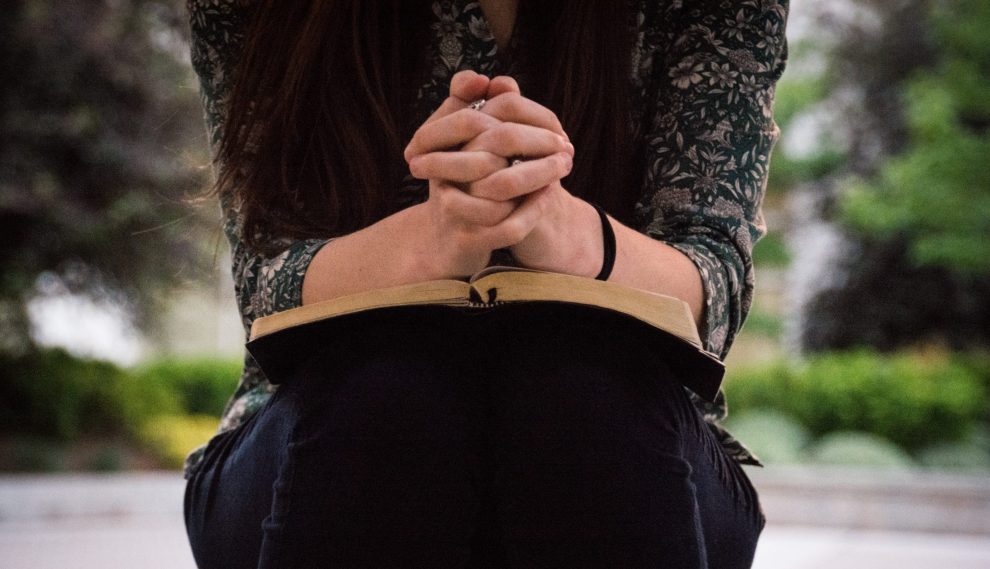“I would hear white students use the n-word freely.”
“Sophomore year, the professor assumed that because I was Black, I attended an inner-city school and grew up in the ‘ghetto.’”
“My boss didn’t understand why tokenizing students of color in marketing materials was a bad idea.”
These are just a few of the stories shared in recent days, anonymously and publicly, by Black, Indigenous, and People of Color (BIPOC) at the Catholic university where I work. Someone created an Instagram account for BIPOC students and alumni to share their experiences on campus. Within four days, the account voiced more than 100 stories of racism, injustice, and suffering endured by BIPOC. Each storyteller speaks a painful truth. Hopefully their truths will serve as a wake-up call for a Catholic community that prides itself on “treating all as Christ.”
These are particular stories from BIPOC at a particular institution—however, the account reflects continued efforts by BIPOC across the country to call white-dominated institutions, including many Catholic parishes, schools, and other organizations, to improve their anti-racism efforts. In part, this is a call to eradicate the white supremacy seeped into policies, hiring practices, organizational culture, and other spaces at the institutional level. But the call of the current moment—a moment built on hundreds of years of oppression—also requires white people to discern the steps each can take individually to become more anti-racist.
What might this discernment look like?
Father Bryan Massingale highlights six places for white people to start in his National Catholic Reporter article, “The assumptions of white privilege and what we can do about it.” In this article, he lifts up a litany of reasons why it has been particularly painful to be Black in America the last few months. He focuses on the story of Amy Cooper, the woman who called police when a Black man asked her to leash her dog in Central Park, and the assumptions about white privilege she embodied in that encounter. Then Massingale offers action steps for white people coming to understand white privilege.
I outline Massingale’s steps here and suggest ways fellow white Christians discerning how to be anti-racist can take action through study, prayer, and work around a related social issue. I find the movements of study, prayer, and work—movements at the heart of Benedictine spirituality—offer a helpful, holistic framework for Christian response. This is by no means an exhaustive list. What would you add? In what ways will you commit to being anti-racist?
Understand the difference between being uncomfortable and being threatened.
Honest talk about race is going to be uncomfortable. There’s no way around it. Layla F. Saad, author of Me and White Supremacy, asks white readers to consider: “How have I been complicit in a system that was designed to benefit me through unearned privileges at the expense of BIPOC?” The list is long.
White people reap benefits for being born with white skin in ways that span many aspects of society: housing, healthcare, the education system, employment opportunities, and on. These white privileges come at great expenses for BIPOC—expenses that play out in a host of ways in different contexts. It could be easy to downplay or ignore the discomfort that is likely to arise when white people really consider the racial disparities at work. But the present moment is calling white people to wrestle with the discomfort.
Saad writes, “[White people] need to know how white privilege benefits you in order to dismantle white supremacy. You cannot dismantle what you cannot see. You cannot challenge what you do not understand.”
- Study – The difference between being uncomfortable and being threatened is on full display in a social issue like police brutality. A study of police-shooting databases from the National Academy of Sciences reports Black men are two and a half times more likely to be killed by police than white men. Police violence against Black women often gets sidelined. Learn more about how Black individuals experience this systemic racism by listening to stories like the one shared by Pastor James Alberts II in an interview with the Collegeville Institute.
- Pray – The Christian tradition leans on lament prayers to express deep sorrow and grief. The psalmists cry out to God: “Out of the depths I cry to you, O Lord …” (Ps. 130) and “How long, O Lord?” (Ps. 13). In these groanings, we bring hardships to light and beg for divine intercession. Draw on the words of the psalmists or put forth your own to lament the racism plaguing our communities.
- Work – Reform requires persistent action. Attend a city council meeting and insist that police brutality be put on the agenda. Ask if officers are required to wear body cameras and demand chokeholds be banned. Advocate for moving funding out of the police budget and into social services like mental health care and education.
Sit in the discomfort this hard truth brings.
Now is the time for white people to sit with what arises when we remember excusing a racist remark or clutching our purses around Black men or saying nothing when police make another Black body go limp. Let your face flush. Let your heart race. Let tears stream. Let your body, in all its God-given wisdom, feel the discomfort of racism.
“Our bodies have a form of knowledge that is different from cognitive brains,” writes Resmaa Menakem in My Grandmother’s Hands: Racialized Trauma and the Pathway to Mending Our Hearts and Bodies. “The body is where we fear, hope, and react; where we constrict and release; where we reflexively fight, flee, or freeze.”
Menakem compares white supremacy to a “toxic chemical we ingest on a daily basis.” It is not just a theory relegated to the rational mind. It is a reality that pulses through the entire being. Therefore, white supremacy and racism must be felt as much as thought.
“If we are to upend the status quo of white-body supremacy, we must begin with our bodies,” says Menakem.
- Study – Paying closer attention to our bodies and the emotions arising from them can lead us to consider the healthcare white bodies receive compared to Black bodies. Talk about an uncomfortable truth: the life expectancy for Black Americans is three and a half years less than white Americans for a host of reasons. Find out more from the Catholic Health Association of the United States. The COVID-19 pandemic has only exacerbated these inequities. Learn more by listening to NPR’s Code Switch podcast episode: “Why the Coronavirus Is Hitting Black Communities Hardest.”
- Pray – Recall some of the final words of George Floyd, Eric Garner, and other Black men: I can’t breathe. In memory of what was taken from these men, carve out time to breathe deeply as you sit with the discomfort of racism. One of the most ancient forms of prayer centers on the breath. Find a mantra to repeat as you inhale and exhale: “Jesus Christ, Son of God, have mercy on me a sinner” or “breathe on me, breath of God.” Or simply listen quietly to the breath of life flowing in and out of your lungs.
- Work – Wear a mask during the COVID-19 pandemic. Protect those around you who are at greater risk for contracting the virus and suffering from serious complications, including people of color.
Admit your ignorance and do something about it.
Whitewashed versions of history dominate textbooks. Take, for instance, the story of Rosa Parks, the civil rights icon. During her decades of activism, Parks boldly defied social norms in pursuit of Black liberation. She called out white supremacy, strategized civil disobedience efforts, and faced death threats. Her famed bus ride was one of countless intentional efforts Parks made throughout her life to fight the evils of racism.
Too often students learn the whitewashed version of Parks’ story and significant other stories from the histories of BIPOC. It is long past time for white people to relearn, to remember in a more honest way, our common history.
Dr. Traci West calls this kind of recollection “a courageous, spiritual activity.” She says, “This kind of remembering requires you to hold the truth of the deliberateness of hate, to dwell on how certain groups and individuals were hatefully targeted, and to remember the historical context of the civil rights movement: white Christian terrorism.”
Thankfully, many great anti-racism resources exist to support this process.
- Study – General ignorance of Black history is one of many ways racism plays out in the U.S. education system. Segregation in schools remains high—a reality that touches every aspect of the student experience. In her landmark book Why Are All the Black Kinds Sitting Together in the Cafeteria?, Dr. Beverly Daniel Tatum notes: “Separate remains unequal as schools with concentrated poverty and racial segregation are still likely to have less-experienced teachers, high levels of teacher turnover, inadequate facilities, and fewer classroom resources.” Learn—and unlearn—more by reading Tatum’s book or listening to this author interview on Minnesota Public Radio.
- Pray – Use the steps of the Ignatian Examen prayer to reflect on the impact of race on your own educational experience. First, become aware of God’s presence. Where is God as you seek to learn more about racism and anti-racism? Second, review your schooling time. What was the racial make-up of your schools? What do you remember learning about race and racism? Where did gaps exist? Third, pay attention to your emotions. Is there a particular race-related experience that made you uncomfortable? Curious? Angry? Fourth, choose one feature and pray from it. How is this experience informing your racial insights and biases today? Fifth, look forward to tomorrow. What is one concrete way you can address racism in your local school system?
- Work – Donate to Black-led education and scholarship efforts like The Historically Black Colleges and Universities (HBCU) Foundation. Support local Black-owned bookstores for your upcoming educational needs, and encourage teachers in your community schools to do the same.
Have the courage to confront your family and friends.
It will be awkward, no doubt. Confronting a loved one about their overtly racist actions is hard enough. But racism also perpetuates in moments perhaps less easy to catch. Cousin Ron says he “doesn’t see color.” Aunt Martha mentions her drive through a “bad neighborhood.”
Letting the moment slip by is certainly the easiest thing to do—but easy is not the Christian way.
“The most threatening racist movement is not the alt-right . . . but the regular American drive for race neutrality,” writes Dr. Ibram X. Kendi, author of How To Be Anti-Racist. His book details the difference between being not racist and being anti-racist. The latter demands people actively promote anti-racist policies and ideas. It is not enough to think your cousin’s racist comment is wrong but do nothing about it.
- Study – Family and friends often gather in homes. These spaces where loved ones come together for meals and conversation—even conversations that get heated—are sacred. Too many people do not have access to affordable housing, including a disproportionate number of Black people. The National Low Income Housing Coalition notes how “decades of racial discrimination in real estate, lending practices, and federal housing policy have made home ownership difficult to obtain for minorities.” The severe shortage of affordable apartments and rentals is another housing hurdle with racist ties. Learn more about efforts from Catholic Charities to make affordable housing a national priority.
- Pray – Bless the living space next time you gather with family or friends. Give thanks for the shelter this space provides. Lift up in prayer those who do not have access to affordable housing. Ask God to inspire you, other community members, and government officials to make the housing market more anti-racist.
- Work – Be proactive. Start a conversation on affordable housing at your next family gathering. Share a story about what your living space means to you. Invite others to do the same. Share stories and statistics on racism in the housing market. Start with the realities present in your local community. Offer to follow up with more resources and conversation.
Be “unconditionally pro-life.”
Catholic circles too often narrow the focus of “pro-life” to being about anti-abortion efforts. As a result, not nearly enough collective attention gets paid to the myriad of other issues threatening the spectrum of life, including racism. Massingale lifts up Saint Pope John Paul II’s summons to be “unconditionally pro-life.” The pope called on Americans to embody this pro-life ethic by working to “eradicate every form of racism.”
Imagine a church convicted that Black lives matter. Imagine a church eager to march for the lives of Black people like George Floyd, Breonna Taylor, and Ahmaud Arbery with the same fervor many march for the rights of the unborn. Significant work is needed to make this church a reality.
“One of the biggest criticisms of the [Black Lives Matter] movement is that a lot of activists are gay activists or are pro-choice, so we shouldn’t be in dialogue with them,” says Olga Segura, author of the forthcoming book, Birth of a Movement: Black Lives Matter and the Catholic Church. “But I think as Catholics, we’re doing a disservice to ourselves and our church when we say we’re pro-life but we’re unwilling to sit with the most significant civil rights movement since the 1960s.”
- Study – The repercussions of one of the longest standing threats to life in the United States—slavery—continue to harm Black people today. White people stole black-owned land and continue to live on it. Many enslaved people never received the payouts promised to them, a move which left families in economic hardships for generations. Read more about the economic and moral debts that continue to threaten Black lives in Ta-Nehisi Coates’ article: “The Case for Reparations.”
- Pray – One way to pray with the life issues prompted by slavery is to listen to African American spirituals, particularly those like “Steal away to Jesus” that were written by enslaved people. Allow the music to wash over you. Soak in the stories. Let the rhythm remind you that the lives of enslaved people and their ancestors matter—and that actions need to be taken to repair the harm done.
- Work – Call your congressional representatives and pressure them to support H.R. 40, the legislation that would create a commission to explore and take action toward reparations. To prepare for the phone call, read more about the case for H.R. 40 and its restorative justice potential by reading Rep. Sheila Jackson Lee’s commentary.
Pray.
It is said many times in the wake of tragedies: thoughts and prayers are not enough. This is certainly true when “prayers” get cheapened to a few words posted on social media. But true Christian prayer, the kind Massingale encourages, is necessary for transformation—the kind of transformation that can dismantle the “soul sickness” of racism and inspire healing action.
In her book Disruptive Christian Ethics, Dr. Traci West writes, “The weekly practice of communal worship holds promise for providing Christians with a space to cultivate their ability to recognize and contest repressive cultural norms like white superiority.”
Praying for change and working for change ought not to be opposing efforts. The Benedictine framework highlights how prayer and work (and study, too!) move in tandem. A Scripture passage on justice rouses me to protest the killing of George Floyd. I bring what I learned at the protest back to prayer—and on the cycle goes.
- Study – Dr. Martin Luther King Jr.’s observation continues to ring true today: the most segregated hour of Christian America is 11 o’clock on Sunday mornings. To learn more about the ways racism permeates church life, read Bryan Massingale’s Racial Justice and the Catholic Church.
- Pray – White images of Jesus tend to dominate white prayer spaces. Find artwork depicting Jesus with darker skin to pray with such as “The Messiah” by Cecil “Creed” Reed Jr. and “Forgive Them Father” by Alex Beaujour.
- Work – Research the racial make-up and anti-racism efforts of your own parish. Talk with parish council members about how the parish can grow in inclusivity. Share anti-racism resources with catechists. Encourage your pastor to preach about anti-racism.
What other study, work, and prayer ideas would you add to this list? May the Holy Spirit inspire each of us and our communities to become more anti-racist in the days and years ahead.
Image: by Olivia Snow on Unsplash















Add comment